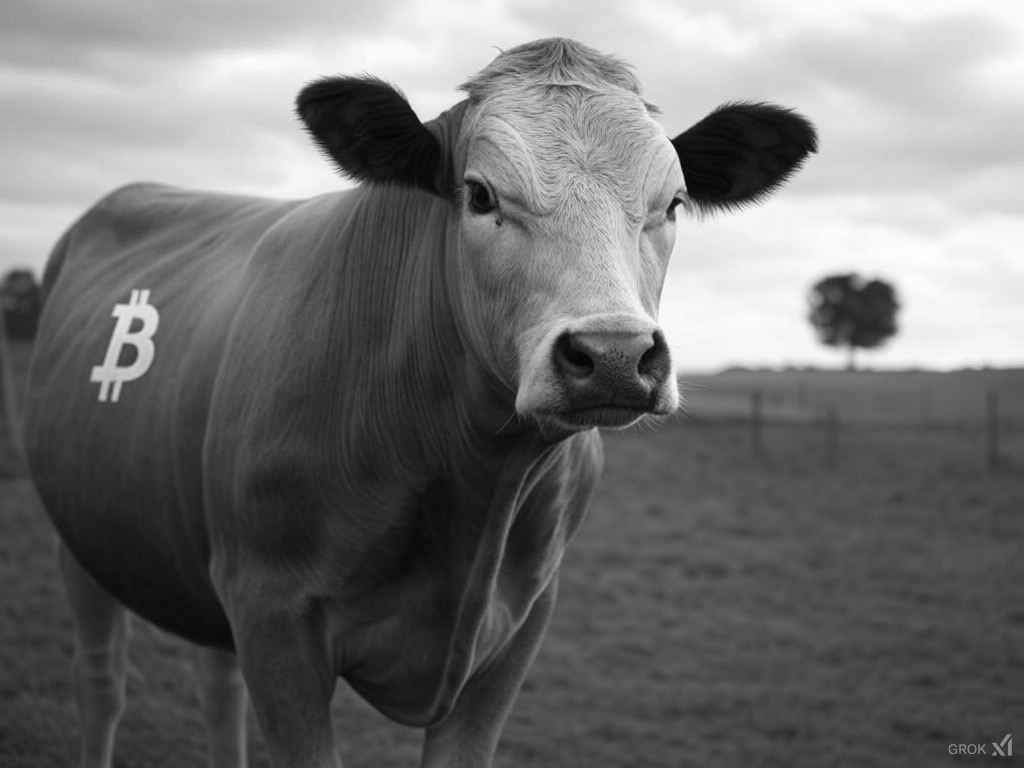How Do I Tokenise a Cow?

So, let’s revisit the question: how does one tokenise a cow?
During the bustling pre-2020s era of crypto innovation, I recall a fleeting conversation about the tokenisation of cows. At the time, being relatively new to the crypto space, I dismissed it as a whimsical idea. But now, I can’t help but wonder: could such seemingly bizarre examples be among the best ways to illustrate the concept of tokenisation and its boundless potential for applying blockchain to a wide range of assets and or commodities?
At first glance, the answer seems straightforward. As with many assets, you would assess the cow’s value and divide it into tokens. For the sake of this example, let’s call them $MooCoin. Each $MooCoin would represent a share of the cow’s total value, allowing holders to own a fraction of the cow.
But here’s where it gets interesting. What if the cow isn’t merely a passive commodity (one whose value is static and depreciating)? What if the cow is instead an active, profit-generating commodity?
Tokenising a profit-generating Commodity
To tokenise a productive cow, the valuation becomes far more complex. You’re no longer just dividing the cost of the cow itself. Instead, you’re accounting for its lifespan, productivity, and the income generated from its produce—milk, for instance. Now, the value of $MooCoin would reflect not only the passive worth of the cow but also the income derived from its profit-generating activities.
In this case, $MooCoin’s value would be influenced by:
- The base value of the cow (its market cost as a passive commodity.)
- The dairy market where milk is sold, introducing market volatility.)
- The health and productivity of the cow (which impact its ability to generate returns.)
This means that $MooCoin holders would see their investment tied not only to the price of cows but also to the broader dynamics of the dairy industry. In essence, $MooCoin would become a vehicle for assessing this market and profiting from it. In the tokenisation world, we would classify $MooCoin as a security token as it represents a profit share of the cow and its productivity.
Challenges and Considerations
For such a system to work, there would need to be transparency in how the cow’s health, yield, and market conditions are tracked and token values are calculated. Reliable real time data would be required to feed real-time market prices, health data and cow value into the blockchain, ensuring fair and accurate valuation of $MooCoin. The concept of tokenising a cow may seem whimsical at first glance. However, it is a feasible idea, and there have been attempts at livestock tokenisation and broader tokenisation of agriculture to increase liquidity and democratise entry. Given the profit-generating capacity and fairly consistent nature of agriculture, it is prime for tokenisation if done correctly, opening up an exciting avenue to access additional liquidity for farmers across Britain and further afield.
Final Thoughts
While the commercial viability of tokenising a single cow is a far reach, it does serve as an excellent example for learning about tokenisation, underscoring the flexibility of tokenisation and its potential to reshape how we think about ownership, productivity of assets, and value distribution. From cows to skyscrapers, tokenisation enables us to fractionalise and trade nearly any asset, paving the way for more inclusive entry to markets and innovative financial systems.
